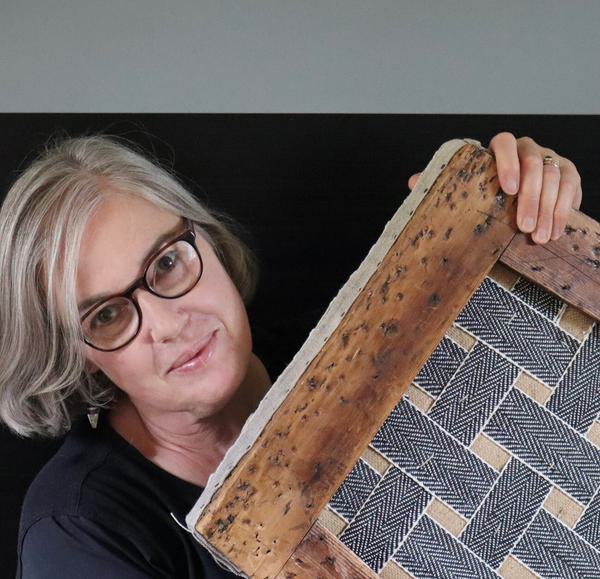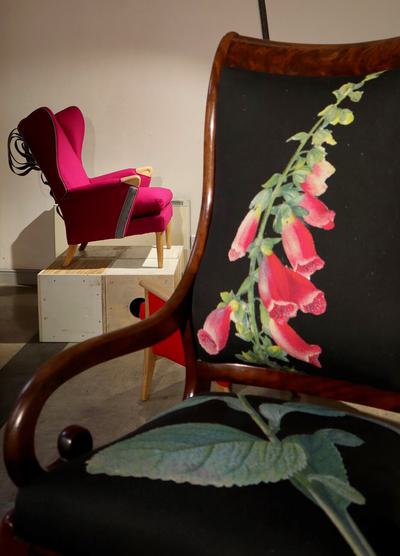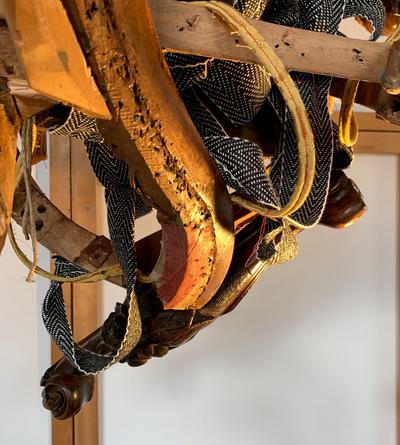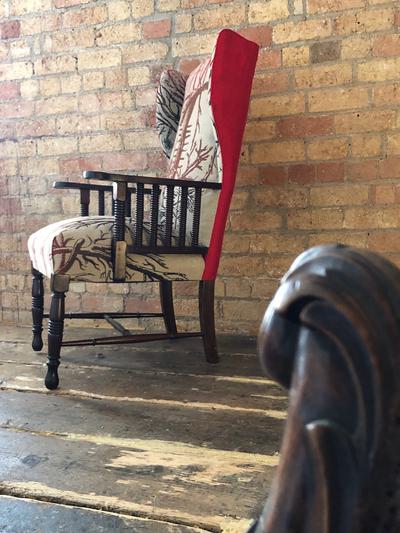Sarah Skinner

Chairs, they’re just ‘part of the furniture’ aren’t they?
Sarah Skinner is an artist and creative upholsterer developing an art practice around old chair frames and the skills and materials involved in traditional reupholstery.
Her work is informed by a serpentine path through life that has included a degree in Art History, an MA in Heritage Studies, an extensive period of time as a Curator of Fine Art and then, alongside developing upholstery skills, care work in a residential home for the elderly.
‘As a curator I couldn’t help but start to examine what I was doing as an upholsterer, interpret it, recognise its potential as an art-form as well as a craft. I was really drawn to hidden layers and hidden strengths as a concept and felt there was a strong resonance between all the work that was hidden under the top fabric and the work, still most often carried out by women, in creating and maintaining a home and all those pressures to conform to some kind of ideal interior, the ‘ideal home’ (in fact I have made some work that attempts to critique the cushion…!)’.
While studying upholstery, Skinner worked part-time in a care home noting there how ageing in humans, in our culture, is often represented as something to fear, to shy away from, whereas the marks of age, a life lived, ‘patina’, is something that has a high value in furniture, it’s a marker of authenticity.
Skinner’s work and the ideas behind it continue to develop. She has created functional chairs with upholstery webbing used as an unexpected decorative feature. Bespoke fabric designs emphasise how the form of a chair echoes the human body: the arms, legs, back, seat, sparking thoughts about what is concealed underneath. There are chairs with a tale or a tail to tell, weird footstools and a set of cushions offered for interactive scattering.
A chair is always going to be something destined to find its place in the home isn’t it? But probably because of Skinner’s background as a curator she has always created her work with an art gallery setting in mind. It began when she displayed a footstool on a wall, upholstered with her first attempt at exposing layers of textiles using the ‘slash and stitch’ technique: ‘To me it looked really interesting, unexpected: it was a transformative act!’
Skinner asserts that a chair on a plinth in a white-walled space is something different to a chair in a home, by the window, by a fireplace … That how you view a chair, a footstool, a cushion is actually an assumption, that there’s an ingrained association with the domestic but in fact it is about context, about function or lack of function and there is a resulting question about value, worth.
As for inspiration and future directions Skinner has always admired the serious wit of Surrealist assemblage, the humour and politics of Dada photomontage. Photography: cutting into it, stitching onto it, is offering one promising way forwards while product versus art, art as product, commissions, providing a service ... these continue to both perplex and inspire her.
January 2024
Helping Artists Keep Going
Axis is an artist-led charity supporting contemporary visual artists with resources, connection, and visibility.






